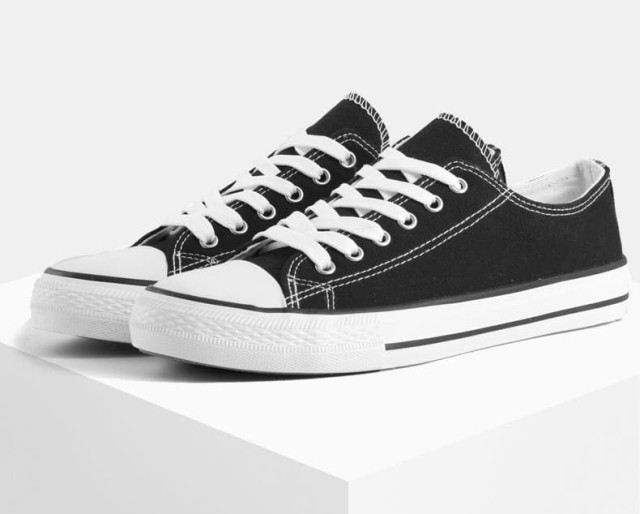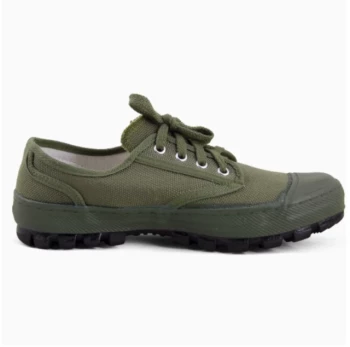For decades, vulcanized soles have been the go-to choice for sneakers and casual footwear, prized for their flexibility and lightweight feel. But research shows these soles struggle in high-impact scenarios, with common failure points causing discomfort or premature wear. Here’s how to identify when vulcanized designs won’t meet your needs—and what solutions exist.
Vulcanized Soles in Everyday Use
The Anatomy of Discomfort: Why Flat Designs Fail for Support
Vulcanized soles are created by bonding thin rubber layers directly to the shoe upper using heat and pressure. While this creates a flexible, low-profile design, it sacrifices critical support structures:
- Lack of Arch Cushioning: The flat construction offers minimal shock absorption, transferring impact forces directly to the feet. Studies note increased fatigue during prolonged standing or walking compared to contoured alternatives.
- Limited Midsole Technology: Unlike cupsole designs with layered foam or gel inserts, vulcanized soles rely solely on basic rubber compounds for cushioning.
Have you noticed foot fatigue after hours in vulcanized shoes? The absence of engineered support systems is often the culprit.
Where Vulcanized Shoes Break Down: The Foxing Tape Weak Point
The foxing tape—a rubber strip reinforcing the seam between sole and upper—is a frequent failure point. Because it’s applied via extrusion (a process where material is pushed through a die), inconsistencies can lead to:
- Delamination: Glue bonds weaken over time, especially in wet conditions, causing soles to separate.
- Sidewall Wear: Thin foxing tape erodes quickly during lateral movements, common in sports or active jobs.
Reinforced foxing designs exist but are rare in mass-market vulcanized footwear.
Choosing the Right Shoe for Your Needs
When to Avoid Vulcanized Soles: High-Impact Use Cases
Vulcanized soles underperform in scenarios requiring:
- Heavy Load-Bearing: Jobs requiring prolonged standing (e.g., healthcare, retail) demand soles with deeper cushioning.
- Dynamic Movements: Sports like basketball or trail running benefit from cupsoles’ molded, multi-density rubber for stability.
- Harsh Terrain: Rough surfaces accelerate wear on thin vulcanized layers.
Reinforced Alternatives and Aftermarket Fixes
For those needing vulcanized shoes’ style but more durability:
- Cupsole Conversions: Brands now offer hybrid designs with vulcanized aesthetics but cupsole-like rubber molding for impact zones.
- Replaceable Insoles: Gel or memory foam inserts can compensate for lack of built-in arch support.
- Protective Sprays: Silicone-based coatings reduce water damage to foxing tape.
Upgrade Your Footwear Strategy with 3515
Whether you’re a distributor seeking bulk orders of performance-focused shoes or a brand owner developing specialized footwear, 3515’s manufacturing expertise ensures solutions tailored to your audience’s needs—from reinforced vulcanized designs to advanced cupsole constructions. [Contact our team] to explore footwear that balances comfort, durability, and style.
Technologies like vulcanization revolutionized footwear, but modern demands require smarter adaptations. Recognizing these limitations helps users and manufacturers alike prioritize long-term comfort over short-term trends.
Related Products
- Wholesale High-Traction Camo Boots - Custom Manufacturer for Brands
- Wholesale Durable Camo Canvas Shoes with High-Traction Rubber Soles
- Durable Rubber-Soled Utility Shoes for Wholesale & Custom Brand Manufacturing
- Durable Canvas Work Shoes with Rubber Lug Sole | Wholesale Manufacturer
- Durable Rubber Sole Outdoor Shoes Wholesale & Custom Manufacturing
Related Articles
- Why Vulcanized Soles Dominate Technical Skateboarding: A Science and Performance Breakdown
- How Military Camouflage Boots Outperform: Engineering for Extreme Survival
- How Vulcanized Rubber Engineering Creates Unbeatable Outdoor Boots
- From Battlefield to Streetwear: The Dual Identity of Military Camouflage Boots
- How Vulcanized Soles Engineer Superior Performance: A Science-Driven Guide for Athletes



















